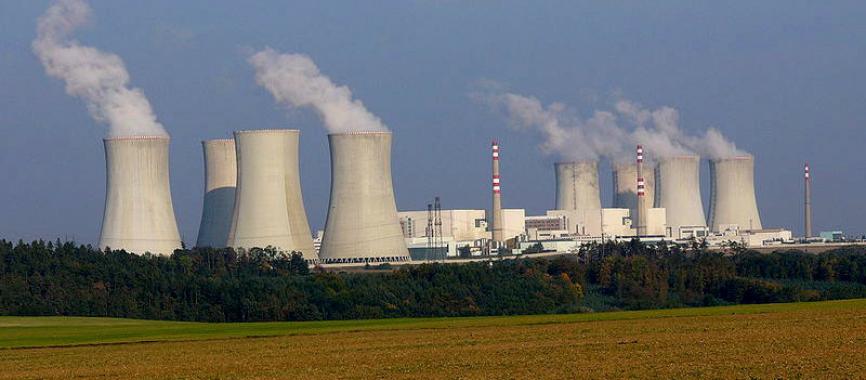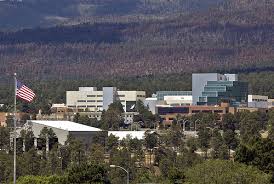
Blog
-
Geiger Readings for September 17, 2014
Ambient office = 102 nanosieverts per hourAmbient outside = 128 nanosieverts per hourSoil exposed to rain water = 129 nanosieverts per hourPeach from Top Foods = 77 nanosieverts per hourTap water = 143 nanosieverts per hourFiltered water = 126 nanosieverts per hour -
Nuclear Reactors 163 – U.S. Taxpayer Will Pay Dearly for Our Use of Nuclear Power
I have stated in previous blogs that when you consider all the different factors such as economic, political, social, technological, public health and environmental, it is obvious that nuclear energy is not a good way to produce electricity. I have often said that the only reason nuclear power is still being discussed as a viable power source is because there is so much money involved in their construction and operation. The nuclear industry has been very successful at offloading liabilities and pocketing profits with the help of a bought and paid for Congress and an industry friendly Nuclear Regulatory Agency.
In South Carolina, the state regulatory agency has allowed the company constructing two new nuclear reactors to pass the cost overruns along to the utility customers even though the unfinished plants have generated no electricity. Some states such as Florida have or had laws on the books that would allow nuclear power companies to charge their customers for the construction costs of nuclear power plants that were never completed and never generated electricity.
If the company building new reactors in Georgia happens to go bankrupt, Congress has given them generous loan guarantees which means that the construction costs of the abandon reactor projects will be passed along to the U.S. taxpayers.
If there should happen to be a major nuclear accident in the U.S. as serious as the March 11, 2013 disaster at Fukushima, the companies responsible are insulated from responsibility for the billions of dollars that the accident will ultimately cost. The Price-Anderson Act requires that each operating nuclear power plant purchase the maximum insurance that is available which is three hundred and seventy five million dollars. Beyond that, if an accident occurs at nuclear plant and the costs exceed the insurance, power plant owners are obligated to pay one hundred and twenty one million dollars into a national fund that will be used to pay for additional costs of the accident. If the cost of an accident exceeds the four hundred and ninety million dollars from the insurance coverage and the extra money from the nuclear power operator, then the Congress can require additional money from the nuclear power operator. If the cost of an accident exceeds the ability of a company to pay, then the U.S. taxpayer will pay the additional cost.
In 2013, four out of the one hundred and four U.S. power reactors were shut down for a variety of reasons including being too expensive to repair or being uncompetitive in the energy market. Activists are calling for the last nuclear power plant in California to be shut down. Most of the remaining nuclear power reactors in the U.S. are reaching the end of their licensed life spans. More will be shut down because they will be too expensive to repair or uncompetitive.
Russia, China, France and Japan are moving aggressively to make nuclear technology exports a major component of their international trade. Russia and China are committed to building dozens of new reactors in the near future. Fortunately, for all the problems that the U.S. has with nuclear power, embarking on a major building and exporting program for nuclear reactors is not one of them. The electricity supplied by nuclear reactors in the U.S. can and should be replaced by renewables and conservation as soon as possible. In any case, I am sure that the U.S. taxpayer will still wind up paying dearly for our use of nuclear power.
-
Radiation News Roundup September 16, 2014
TV director covering Fukushima thyroid cancer and nuclear industry “commits suicide.” fukushima-diary.com
Orlando Utilities Commission (OUC) has reached agreement to sell back its stake in the shut down Crystal River 3 nuclear power plant in Florida to Duke Energy, OUC spokesman Tim Trudell said today. world-nuclear-news.org
Entergy’s Arkansas Nuclear One has reported potential degradation in fuel assemblies transferred into a dry cask. nuclearstreet.com
-
Geiger Readings for September 16, 2014
Ambient office = 95 nanosieverts per hourAmbient outside = 83 nanosieverts per hourSoil exposed to rain water = 60 nanosieverts per hourMango from Top Foods = 64 nanosieverts per hourTap water = 112 nanosieverts per hourFiltered water = 97 nanosieverts per hour -
Nuclear Weapons 92 – Los Almos National Laboratory Fires an Employee for Publication of an Article of Nuclear Disarmament
James Doyle spent seventeen years as a nuclear policy specialist at the U.S. Los Alamos National Laboratory (LANL). The LANL receives about two billion dollars each year for work that includes nuclear weapons development. Last year Doyle published an article titled “Why Eliminate Nuclear Weapons?” in the journal Survival: Global Politics and Strategy. This journal is published by the International Institute for Strategic Studies in the U.K. Following the publication of this article, Doyle lost his job at LANL.
Doyle’s article pointed out that nuclear weapons no longer provided strategic utility or value as a deterrent for war. He said that eliminating nuclear weapons would strongly increase international security. He also said that he thought that now was a good time to hold serious discussions about global nuclear disarmament. Although President Obama supports nuclear disarmament, he did not think that it would happen in his lifetime. Doyle suggested that it should be possible to achieve total nuclear armament in thirty four years which would mean that the world would have eliminated nuclear weapons before the one hundredth anniversary of the dropping of atomic bombs on Hiroshima and Nagasaki at the end of the Second World War. There are still advocate for nuclear weapons but many respected voices in the world of global security agree publicly with the ideas expressed in Doyle’s article.
Doyle’s dismissal from LANL is detailed in a report by the Center for Public Integrity. Because Doyle wrote his article at home outside of working hours, he was not obligated to show the article to LANL for what is called a “classification” review. However, Doyle did submit the article to LANL for review. One of Doyle’s coworkers said that while the scientists at LANL had no problem with the article, LANL management was upset. Doyle published his article on February 1st of 2013, having been told by the staff who handled classification reviews that there was no classified information in his article.
Around the time of the publication of the article, the LANL and their Republican allies on the House Armed Services Committee were trying to get funding for a new multibillion dollar facility at LANL. This new facility would manufacture the small plutonium spheres that form the heart of nuclear warheads. Despite resistance against the new facility from the Obama administration, a Republican Congressman managed to get an amendment attached to the bill for the project. According to the amendment, the facility had to be completed by 2024. Obama did sign the bill including the amendment. Appropriation of funds for the facility is still being debated. Obviously, a call for total nuclear disarmament could have a negative effect on support for the planned facility.
Five days after the article was published, Doyle was told that senior LANL managers wanted copies of all of the more than one hundred articles that he had written during his time at the LANL. On that same day, Doyle was told that his article did contain classified information. Seven days after the publication of the article, the head of the classification review department told Doyle that his article needed to be withdrawn from publication because it contained classified information. Doyle was forced to give up his home computer so that all copies of his article could be erased. In addition, he lost his high-level security clearance. Doyle fought back for several months, protesting his treatment and the reclassification of his article by the LANL.
Doyle was ultimate fired from his position at LANL on July 8th, 2014. LANL representatives claim that it all just part of a regular planned program of layoffs at the lab. Doyle and his supporters are skeptical of the LANL excuse and say that Doyle was fired improperly for political reasons. After all, his article was supporting the publicly expressed policy position of the U.S. President with respect to nuclear disarmament.
Los Alamos Nuclear Laboratory:
-
Geiger Readings for September 15, 2014
Ambient office = 88 nanosieverts per hourAmbient outside = 119 nanosieverts per hourSoil exposed to rain water = 125 nanosieverts per hourBartlett pear from Top Foods = 51 nanosieverts per hourTap water = 104 nanosieverts per hourFiltered water = 92 nanosieverts per hour -
Radiation News Roundup September 14, 2014
The Asahi Shimbun, Japan’s second-largest daily newspaper, retracted an influential news report on the Fukushima nuclear disaster on Thursday after weeks of criticism from other news organizations. rallyagainstomalley.com
Plutonium found in Carlsbad, New Mexico nearly 30 miles from US WIPP nuclear site. enenews.com
-
Geiger Readings for September 14, 2014
Ambient office = 116 nanosieverts per hourAmbient outside = 91 nanosieverts per hourSoil exposed to rain water = 100 nanosieverts per hourYellow bell pepper from Top Foods = 91 nanosieverts per hourTap water = 107 nanosieverts per hourFiltered water = 100 nanosieverts per hour -
Radiation News Roundup September 13, 2014
The Asahi Shimbun, Japan’s second-largest daily newspaper, retracted an influential news report on the Fukushima nuclear disaster on Thursday after weeks of criticism from other news organizations. rallyagainstomalley.com
Plutonium found in Carlsbad, New Mexico nearly 30 miles from US WIPP nuclear site. enenews.com
-
Geiger Readings for September 13, 2014
Ambient office = 100 nanosieverts per hourAmbient outside = 120 nanosieverts per hourSoil exposed to rain water = 98 nanosieverts per hourCrimini mushroom from Top Foods = 81 nanosieverts per hourTap water = 72 nanosieverts per hourFiltered water = 57 nanosieverts per hourPetrale sole – Caught in USA = 67 nanosieverts per hour






